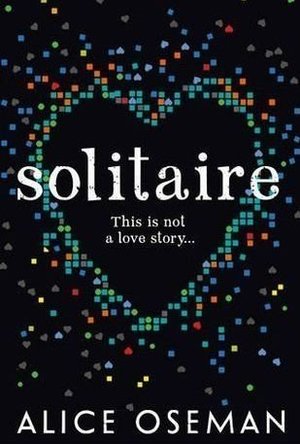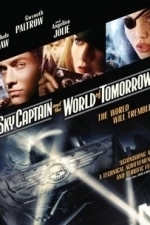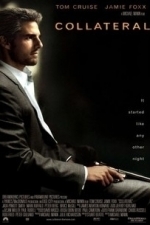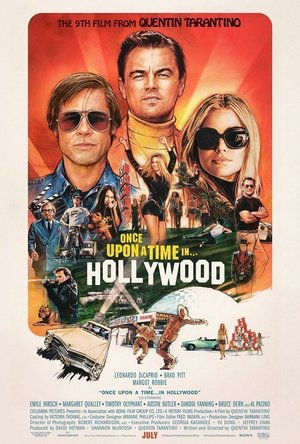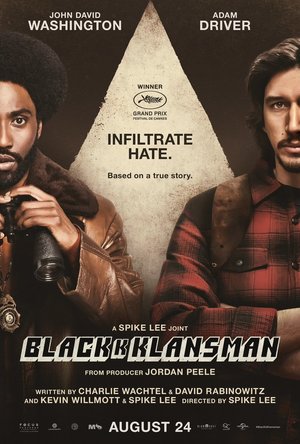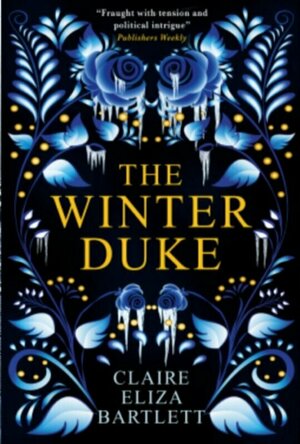A while back, I read an online comic strip by the same author, Heartstopper Volume 1. I found it by chance and I literally flew through it. I adored it and I went ahead and TBR’d some of her other books. I found this one on Scribd and come to find this was her baby. This was her debut novel. The story was pretty good, it is NOT a love story, but I sometimes found myself getting frustrated with the main character. Reasons why are listed below.
The story is told from a teenager named Victoria ‘Tori’ Spring. She has two younger brothers and she is quite…indifferent. She has one best friend, and honestly one friend only, and she’s very much the pessimist. I can’t fully fault her for that, but some things that I just CANNOT tolerate. I found myself gasping and GLARING at the words as I read them.
She hates books. Yes, she said she hates books (-1 point). She knows the name of each book and the author who wrote them, but she won’t actually read them.
Though she loves film so I’ll give the point back to her (0).
"When you watch a film, you’re sort of an outsider looking in. With a book – you’re right there. You are inside. You are the main character."
She thinks Pride and Prejudice is ridiculous and boring…she gets positive points for that (+2) – I’m sorry I’m in the minority. I do not care for Jane Austen and find her so called romance novels dull and boring. Not sorry!
She despises Disney because the movies are total fake and unrealistic. WELL NO SHIT! It’s DISNEY! (-200) – I’m a Disney nerd and while I don’t agree with sugar coating the original fair tales, I still LOVE Disney. You can’t fault me for that!
Anyway…
Tori is highly cynical and while I can appreciate that in her, sometimes she made my favorite cartoon character, Daria, seem like a sweetheart. Two guys come into Tori’s life. One was an old childhood friend, Lucas, and the other is someone she met before, Michael. At the same time, a blog group called ‘Solitaire’ starts making trouble…almost in Tori’s honor.
I won’t go into great detail, mostly because I would definitely give more away than I want to. I breezed through this story quickly, but there are just some things in the story that just didn’t sit well with me.
This guy Lucas was so sketchy that he nearly drove Tori crazy with his change in personality.
Her parents…they literally do not seem to care. Her mother most of all. She is mostly on her computer and seems to kind of be absent, mentally, as a parental figure. That never gets resolved, and I don’t know if that’s a good thing or bad thing. In the end, it really bothered me at how disinterested her parents really were. I get that perhaps it’s something you do when you’re bringing up teenagers, but damn!!
"I swear to God I’m a freak! I mean it. One day I’m going to forget how to wake up."
You’re probably thinking that this really doesn’t seem like it would be in the mental health genre. It is. Tori goes through an awful lot in this story, not to mention the mental strain with her brother, Charlie. I will say there are some MILD trigger warnings regarding implied self harm.
I was kind of left with mixed emotions with this book. I have great respect for this author and this being her first story. I know it’s near and dear to her heart. I wouldn’t say that this was at the top of my list, but it’s not at the bottom either. I definitely appreciated it NOT BEING a love story. Although it seemed like it would, despite the subtitle of the book, but I’m glad it wasn’t.
Gareth von Kallenbach (980 KP) rated Sky Captain and the World of Tomorrow (2004) in Movies
Aug 14, 2019
The film stars Gwyneth Paltrow and Jude Law as reporter Polly Prince and Aviator Sky Captain, who are reunited during a surprise attack on New York by an army of robot . Polly has been investigating a recent wake of scientists who have vanished under mysterious circumstances, and when the robots attack, Polly sees a connection and gets in contact with her old flame the Sky Captain.
Sky Captain is not thrilled to see Polly as he does not trust her, especially when they last parted under a difficult situation where the Sky Captain was left in a dangerous situation as a result of Polly’s ambition. Nevertheless, the duo team up and investigate the cause of the attacks. No sooner does the duo start the investigation, then Sky Captain’s base is attacked and his friend and gadget creator Dex (Giovanni Ribisi), has been kidnapped.
In a race against time to save Dex and stop the evil Dr. Totenkoph from destroying the world, Sky Captain and Polly must travel the globe meeting all manner of deadly and bizarre resistance in some of the most remote locations on the planet. Eventually the team meets up with Captain Franky Cook, (Angelina Jolie), who also has a past with Sky Captain, and her legion of flying forces help stage an attack on the good doctors compound in a lavish display of FX and action as they attempt to gain entry to a hidden fortress.
With the clock ticking, and the situation growing tense, Sky Captain and his crew must traverse the exotic and deadly location of the hidden location before it is to late if they are to stop the doctor and his henchmen (Bai Ling), and save Dex, the missing scientists, and the world.
While ambitious “Sky Captain” suffers from a lack of focus as the film tries to do too much. Writer/Director Kerry Conran does a good job in his first feature, as he is able to blend lavish visuals in a unique and creative way to create and populate the world of the film. Sadly though, the performances of Paltrow and Law are remarkably understated and the talented cast often comes across as bland. This causes the audience to have little connection with the characters and any real tension or chemistry is sadly lacking. We know there was some history between the two lead characters but it is mostly glossed over in favor of the action that after a while comes across as more of the same and becomes bland. Only the Franky character stands out as Jollie plays her with a sultry charm and flair that hides her devilish streak, yet emphasizes the strength of her character and her loyalty to the captain.
I had really wanted to like this film, as I found the premise to be interesting, however the action sequences were rather under whelming and to me it was very obvious that the film was filmed entirely against screens and used CGI for everything from buildings to sets. While ambitious, it became overwhelming after a while and in more than one instance the backgrounds were obviously false and did not match up well with the actors.
While this can be excused, what cant be a pedestrian plot that borrows heavily from other works, and while they like this film were inspired by the serials of old, and pulp comics, I could not help but see the “Indiana Jones”, “Star Wars”, and “Jurassic Park”, over and over in the film. Law, Jolie and Paltrow are talented actors but they are given little to do aside from run around and spout stale dialogue from a story that is already muddled down by a lackluster plot, lack of tension, pacing, and average special effects.
Conran is a director with promise and it should be noted that despite the film’s faults, the film was a daunting task as it was shot in just 29 days, which would strain even the most seasoned of directors. As it stands “Sky Captain” is an average film that could have been much better with just a little more time in the hangar.
Gareth von Kallenbach (980 KP) rated Collateral (2004) in Movies
Aug 14, 2019
In the new Drama “Collateral”, Max is about to have his notion of life and the world turned upside down by a passenger named Vincent (Tom Cruise), who is a polar opposite of Max in every way. Vincent is a well-dressed business man who hires Max for the evening as he needs to make five stops in order to complete what he says are real estate deals. Although reluctant at first, the thought of $600.00 for a few hours work soon convinces Max to take the job and ferry Vincent around Los Angeles.
En route to the first stop, Vincent questions Max about why he is waiting to start his company when he could easily lease a Town car to get started and expand from there. The question unsettles the usually mild Max as what the stranger is saying makes a lot of sense but it also undermines the fact that Max is uncomfortable with taking the next step be it in his business ventures or in his social life such as calling an attractive attorney who was clearly interested in him.
While waiting for Vincent after the first stop, the sky literally falls upon Max’s word when a body crashes on his cab and Vincent forces Max at gunpoint to hide the body and continue driving him around. Vincent has one evening to complete his rounds and each stop will result in another death despite Max’s best efforts to intervene. No matter what Max attempts to get out of the situation or to again help, Vincent is always one step ahead of him and able to manipulate Max.
It does not take long for the tense situation to escalate as the result of Vincent’s work has not gone unnoticed by the police largely due to Max’s involvement, and this only causes Vincent to become even more focused and even more of a danger to Max as he needs to complete his tasks before morning and stay ahead of the police and other potential dangers.
“Collateral” is a gripping and intense thriller that contains some of the best work Cruise has done in his career as he portrays Vincent as a complex character who does not find fault with what he does and has no qualms about taking life, yet is amazed by Max and his unrealized dreams and moved by a performance at a local Jazz club.
One could almost call Vincent a Gentleman bandit were it not for the vast amounts of death and destruction he leaves in his wake. He is clearly an intelligent person who makes no apologies for what he does as he sees it as an insignificant blip in the vast universe.
Foxx meanwhile plays off character as he plays a very quite and withdrawn individual that has to be forced out of his shell. After years of playing brash and outrageous characters it was refreshing to see this talented actor turn in an emotional yet restrained performance that shows that he is a talent on the rise and if properly used, can be a gigantic star as not only is he capable of humor and drama, he can easily move to action when it is warranted and looks comfy and competent doing so.
The film also has some impressive visuals as Director Michael Mann gives viewers some amazing shots of the L.A. skyline at night, and the way he shoots the streets and back alleys with a neon glow gives the film a very natural look. On more than one occasion, I go a sense of déjà vu as the natural manner in which the surrounding city and citizens behave and look like a day in the life of rather than a movie set.
The film does drag a bit roughly ¾ in and some may find the ending a bit pat, but that being said, “Collateral” is a solid action drama and one of the best films of the year.
Lee (2222 KP) rated Once Upon a Time in Hollywood (2019) in Movies
Aug 16, 2019
Leonardo DiCaprio is Rick Dalton, a TV and movie star best known for repeatedly saving the day in the now cancelled TV show 'Bounty Law', where he played a classic screen cowboy. Rick is struggling to come to terms with his fading career, and the feeling that Hollywood is moving on without him. His best, and only friend, is Cliff Booth (Brad Pitt), who has been Rick's stunt double over the years. Work for Cliff has dried up following rumours that he murdered his wife and Cliff now spends his days as Rick's driver, odd-job man and general shoulder to cry on. He seems fairly relaxed about his simple lifestyle though - returning each evening to his trailer, and faithful canine companion Brandy, before picking Rick up bright and early the next day in order to drive him to whatever production set he's currently working at.
Meanwhile, successful young actor Sharon Tate (Margot Robbie) has moved in next door to Rick along with her husband, director Roman Polanski. This is the area where Tarantino weaves fact with fiction and if you're not familiar with the Manson murders of 1969, it's probably worth reading up on a little bit before heading into the movie. On the night of 9 August 1969, three followers of cult leader Charles Manson entered the home of a heavily pregnant Sharon Tate and brutally murdered her and the friends who were with her at the time. Once Upon a Time in Hollywood begins a few months before those events, and then takes its sweet time in slowly building towards it.
If it weren't for the performances of everyone involved, this would have been a much harder watch for me. Brad Pitt is the best I've seen him for a long time here, all smiles and laid-back charm, a real interesting and enjoyable character. Leonardo DiCaprio is also on fine form as the broken man struggling to cling to fame and when the two are together, they're a lot of fun. Margot Robbie, has far less to do in her parallel story-line, but still manages to shine in her charismatic portrayal of Tate.
What does make the movie harder to watch is the run-time and, as I said right at the start, I feel this definitely could have benefited from at least an hour being chopped. Sunny LA during the 1960s is beautiful to look at, and when we're following Rick and Cliff as they cruise around town in their car it's nostalgic, vibrant and wonderful to watch. But, we get to follow the characters around town in their cars quite a lot in this movie. And, on top of that, literally every scene, no matter how significant, irrelevant or weak it may be, is dragged out far longer than it needs to be. The great scenes become diluted, and the scenes where nothing much was happening anyway, just become frustrating and hard work to hold your attention.
Along the way, our characters occasionally and unknowingly cross paths with the hippies who form Charles Manson's cult at Spahn Ranch. Cliff even has a uneasy standoff with a group of them at the ranch itself in one of the better scenes of the movie. It's these suspenseful moments that increase the tension perfectly, stoking the sense of foreboding and providing a constant reminder of the death and destruction set to come. The final 15 minutes or so do provide us with some intense, violent madness - a real wake up call after the meandering, often floundering, plot-lines of the movie up until that point. As always with Tarantino movies, there's plenty to digest, dissect and discuss but I certainly won't be revisiting this one any time soon.
Gareth von Kallenbach (980 KP) rated BlacKkKlansman (2018) in Movies
Jul 8, 2019
The film is very creative in the way that it presents history and allows the audience ride along with the action, suspense, and anxiety experience by Washington and Driver’s characters. The tone of the film, at times, is lighthearted in its approach but quickly draws you back in when faced with the reality that David Duke, and people like him walk among us dressing up their racism with non-threatening slogans, professional attire, and a clean-cut package.
The story displayed is a reminder that racism in America has a long history and is not isolated geographically to the south nor limited to Charlottesville or Charleston. The attitudes and actions committed by those who agree with the stances of white supremacy and white supremacist organizations have had a drastic impact on the development of American society. It has shaped and misshapen our attitudes towards one another. It continues to affect us today as we all bear witness to unbridled racism or the downplaying of racism with terms like “political correctness.” This film is timely in its approach and offers audiences a more full and expansive view of what combatting racism and racist attitudes and actions looks like.
Blackkklansman is a film that many have waited for when first hearing about the story of Ron Stallworth and they will not be disappointed with what they witness on screen. Sadly, the people who desperately need to see this movie may pass on it because they are uncomfortable with the subject matter and the reality that they themselves may be complicit in the continuance of racism and white supremacy. This film feels like a conversation being conducted directly between the director and audience. There are subtleties that allow the audience to think about the meaning and even parallel between the early 1970s and the current political environment, as well as, moments where there is no hiding of the message, no metaphor, no allegory. The filmmakers make it clear for those watching that many of us need to wake up almost as blatantly as Spike Lee promotes one of his earlier films, School Daze.
The only problem I found with the film was that I was left wanting more discussion. I wanted to see more of what Ron Stallworth dealt with as the only black detective in his department. If anything, this shows a real strength in the film by leaving audiences emotionally connected with the horrors that he faced, as well as, the way that those around him come to grips with the reality of the hatred and racial violence that had overlooked before because it did not have a direct effect on them. Blackkklansman is a film that will have audiences reflecting long after the credits have rolled. Hopefully the themes, metaphors, and overall message will help foster overdue and well-needed conversations about race, racism, prejudice, and violence. This film takes audiences out of their comfort zones and forces them to face some of the dark corners of America for two hours. Within that two hours, hopefully the people who don’t recognize racism and bigotry get a glimpse of the true horror and fear that marginalized communities feel on a daily basis so that they themselves can be agents of change and fight against racism.
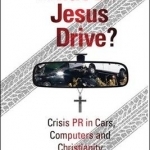
What Did Jesus Drive?: Crisis PR in Cars, Computers and Christianity
Book
What Did Jesus Drive, Is mostly about crises in the car industry, but then it's so much bigger! It's...
Lottie disney bookworm (1056 KP) rated The Winter Duke in Books
Oct 13, 2020
Ekata is a middle child within the Avenko royal family: a family who are intent on murdering each other to get to the throne. However, Ekata has no interest in the throne at all: her interests lie in biology rather than brokering treaties and she wants nothing more than to leave Kylma Above and attend university.
However, at the age of thirteen, Ekata wakes to find herself the only member of her family who has not been cursed into a permanent sleep. Suddenly, she is the Grand Duke and is expected to prove herself worthy to rule Kylma Above: conquering the world of politics and magic in order to find a way to wake her family and avoid death herself.
The Winter Duke spans only six days in its storyline. Nonetheless, this does not diminish the journey that Bartlett takes her readers on: there are twists at every turn and almost everyone seems like a villain; neither Ekata nor the reader knows whom they can trust.
Although this is very much Ekata’s story, there are so many characters surrounding her that there is a danger some of these may seem undeveloped. Thankfully, I didn’t feel this way at all. Bartlett brings something different to each character she introduces: from Sigis’ immediate repulsiveness; Eirhan’s deadpan nature and Inkar’s flirty charms. All the characters have their part to play and, although keeping track of all the ministers could be difficult at times, this only added to the overwhelming suffocation that Ekata must be feeling.
Ekata herself is an amazing protagonist: at just thirteen she makes a number of impulsive decisions which end disastrously – so why do we, as a reader, not get frustrated with her? Again, I feel that this is due, in part, to the dizzying number of secondary characters. The reader witnesses the sheer number of commitments that fall onto the shoulders of one who never aspired to this role: we attend unwanted proposals; hear the accusations of murdering her own family; comprehend that she is used as a pawn by her Prime Minister and constantly see Ekata’s authority undermined due to her sex. It is impossible not to empathise with her desperate need to return to her normal life.
Sexism plays a large part in Ekata’s story, with Sigis immediately heralded as the solution to her problems due to his position as a strong man with an army. Inkar is also underestimated due to being female: before she then shatters these perceptions with her axes, her willingness to fight and her protective nature over Ekata.
However, The Winter Duke has to be commended for the gender fluidity within its pages. The brideshow is made of men and women, at least one minister is non-binary and the only romance within this novel is between two queer females. This was such a natural romance as well, slow-burning and cautious due to the politics involved but one that, when the walls of both women came down, could achieve the impossible.
The world building by Claire Eliza Bartlett in this novel is second to none. Kylma Above is impressive with its ice palaces and winter roses invading every corner. However, Kylma Below, the duchy below the ice is magical and sinister in equal measure. With fields of magic, sharks used in tribunals, and coral gardens, it wasn’t only Ekata who wanted to explore further.
Quite a few YA novels recently have included queer women smashing the patriarchy. This is the first one I have read where they smash the autocracy.
Ekata’s journey to find out what kind of ruler she will be is encapsulating and riveting. In a story where the betrayal just keeps coming, Ekata remains loyal to the end – despite the epilogue proving that this is never appreciated. The world of Kylma was immersive and the themes of politics, murder, sexism and violence are swept up by the breezy writing style to create a book that was impossible to put down.
Thank you to Netgalley for giving me the opportunity to read and review this wonderful novel.

Volume Sanity
Utilities and Entertainment
App
One big slider bar to control the system volume limit. Easy. Do you have a child who always plays...

PhotoPills
Photo & Video and Education
App
Unlock your creative potential! Discover how to easily turn any Sun, Moon and Milky Way scene you...

Lose Weight Hypnosis
Health & Fitness and Lifestyle
App
◉ Learn to enjoy healthy food and exercise after listening daily for just 1–3 weeks ◉ Change...
